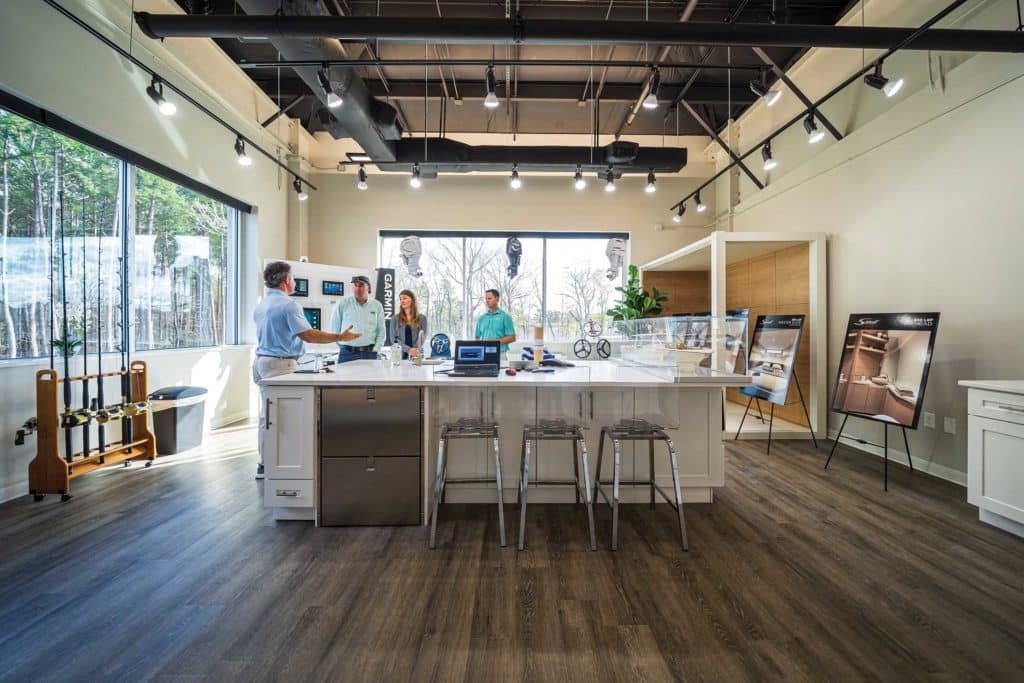
“Welcome to the Belmond Charleston Place,” said the young valet cheerily as he opened my passenger door. “Are y’all staying with us tonight?”
We stepped into an unseasonably warm January day. The tang of sea air was unmistakable; it was almost a shame to go inside, leaving the bustle of downtown Charleston behind.
Almost.
The hotel lobby shone, from its sweeping grand staircase to the golden, glittering lights. Jazz music and a low murmur of conversation flowed from the direction of the Thoroughbred Room, and shiny brand names beckoned from what was clearly a high-end shopping area.
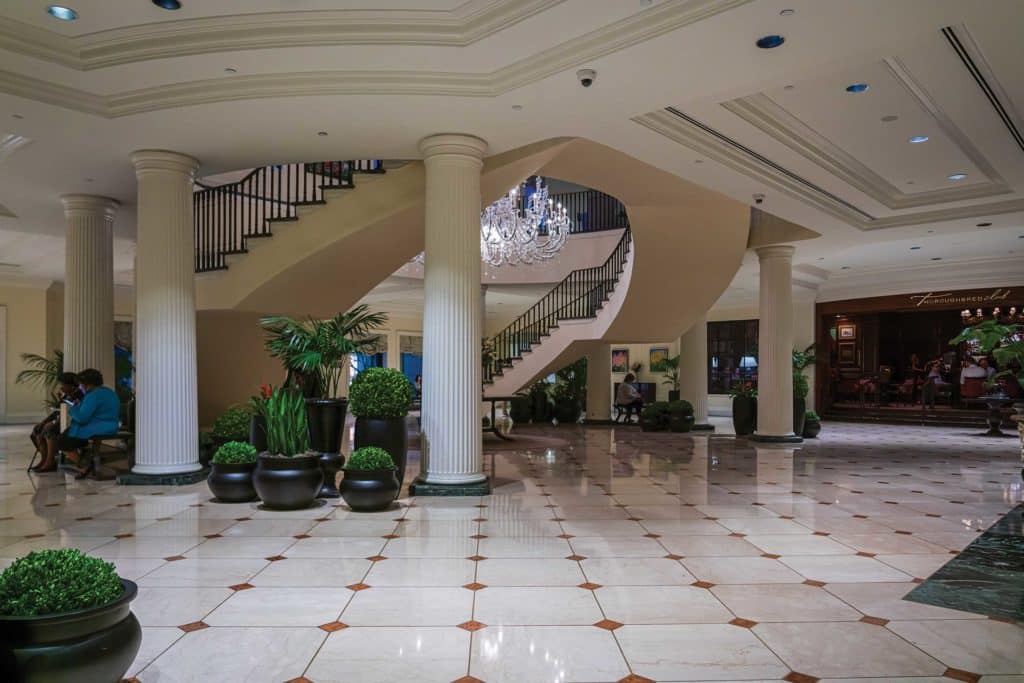
We approached the registration counter.
“I’m Heather Steinberger,” I began, “and we have a reservation…”
“Oh yes, Mr. and Mrs. Steinberger, with Scout Boats,” the young man responded with a warm smile. “We’ve been expecting you. Your room is ready, and please enjoy our complimentary gourmet hors d’oeuvres and cocktails on the Club Level this evening.”
We collected our luggage and turned toward the elevators.
“Oh, Mrs. Steinberger,” he called out. “Congratulations on your new boat!”
Take the VIP Tour
In the interest of full disclosure, we did not buy a boat. Rather, we were on assignment: Travel to coastal South Carolina and slip into the shoes of new Scout 380 LXF owners. We wanted to find out how this particular boatbuilder has taken its customer experience to the next level, one that has more in common with luxury automobiles and even luxury homes than with fishing boats.
We quickly realized this wasn’t going to be any old customer-service experience. It began as soon as we pulled into the parking lot at Scout’s boatbuilding facility in Summerville, 25 miles northwest of Charleston. We found our own designated parking space adjacent to the front doors, and when we entered the lobby, a sign welcomed us by name.
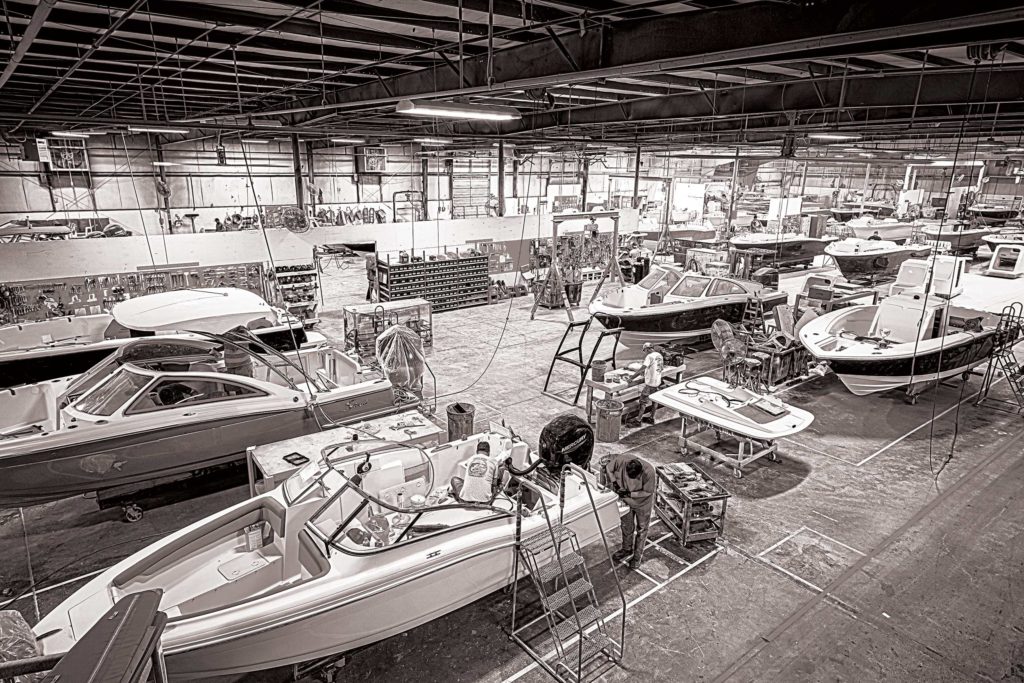
I’d barely had an opportunity to admire the branded merchandise available for purchase—including the fancy Yeti mugs I coveted—before Alan Lang, director of sales and marketing, introduced himself with a broad grin and ushered us onto the production floor.
This isn’t unusual for Lang. It’s part of his job, and he handles it with genuine enthusiasm. If you purchase a Scout and wish to make the trip to Summerville to see your boat, Lang will take care of all the arrangements: airport transfers, a factory tour, quality time in the new design studio, hotel accommodations, even dinner reservations at a Charleston hotspot. He’ll also get you out on the water.
“Some customers will visit five or six times, from around the country and overseas,” he said. “They’re all excited to visit. Not only is it a beautiful destination, the Lowcountry is home to their boat and the people who built it.”
Lang says Scout’s customers are split 50-50 between those who use the boats as their primary vessels and those who are adding to an existing fleet. In the latter case, many Scouts will serve as yacht tenders. That includes the 38- to 53-footers coming to life in Building D.
“The 53 is a roughly $2.5 million boat, but the final price tag depends on the customer,” Lang explained. “We had a Middle Eastern royal family who threw six 450 hp Mercs on it and customized everything they could.”
Read Next: An exclusive interview with Scout Boats President, Steve Potts, describing the 53 LXF, Scout’s largest boat to date!
Other recent Scout 53s went to a Vegas casino owner and a Latin pop star. Naturally, we were curious, but Lang wasn’t about to kiss and tell.
“You probably could guess who they are,” he said with a wink. I made a mental note to confer with the internet later.
Watching the Build
When we went to the production floor, it was humming with activity. Immediately, I noticed a crew hand-laying fiberglass.
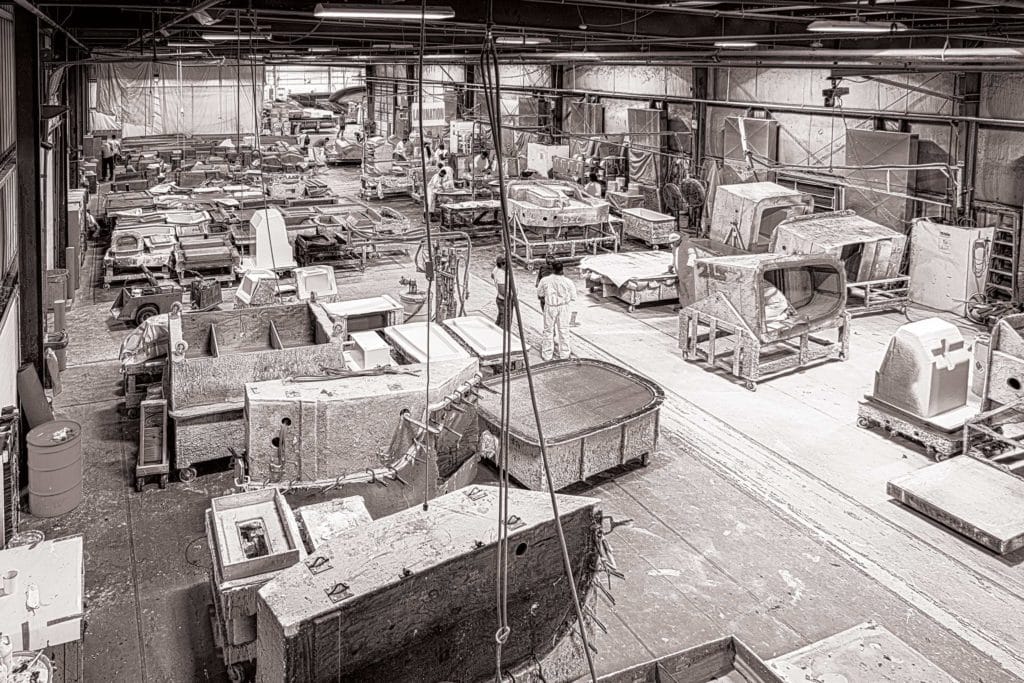
“We produce the only 100 percent hand-laid fishing boat on the market,” Lang explained. “Instead of one person with a chopper gun, we’ll have six to 12 people hand-laying fiberglass in a multidirectional pattern to an exact laminate schedule. That means tolerances are tightly controlled by our engineers. We can eliminate 60 percent of extra resin for a strong hull, with no extra weight.”
As we continued our walk, Lang called attention to the high-density foam-core composites, which won’t ingest water and start rotting, and the heavy-duty methacrylate bonding material for two-engine boats 25 feet and up.
“Putty would work just fine,” Lang observed. “This is total overkill.”
In addition, each boat’s deck fits neatly inside the hull; the lip is on top rather than underneath, and a rub rail covers the seam. I hadn’t given this much thought, but the hydrodynamics make perfect sense. It’s kind of a reverse-shoebox design. When the boat is underway, the water pushes the sides of the hull inward, and the deck provides support.
On our way to see the testing, inspection and detailing areas, we caught a glimpse of Building C, home to research and development. This is the daily workspace for Steve Potts, Scout Boats’ founder and president, and his son Stevie, vice president of research and development.
When I observed that it’s increasingly rare for boat companies to remain in the hands of family founders, Lang nodded.
“Steve started the company in his garage,” he said. “He’s been a boatbuilder since his teens, and he says he still thinks of himself that way. Stevie has been involved since his childhood.
“The two of them have done every single job here, and they still work hard—as hard or maybe harder than everyone else,” he continued. “The employees respect them, and they all take pride in seeing the boats on the water and the clothing around town. ‘Family owned’ means something.”
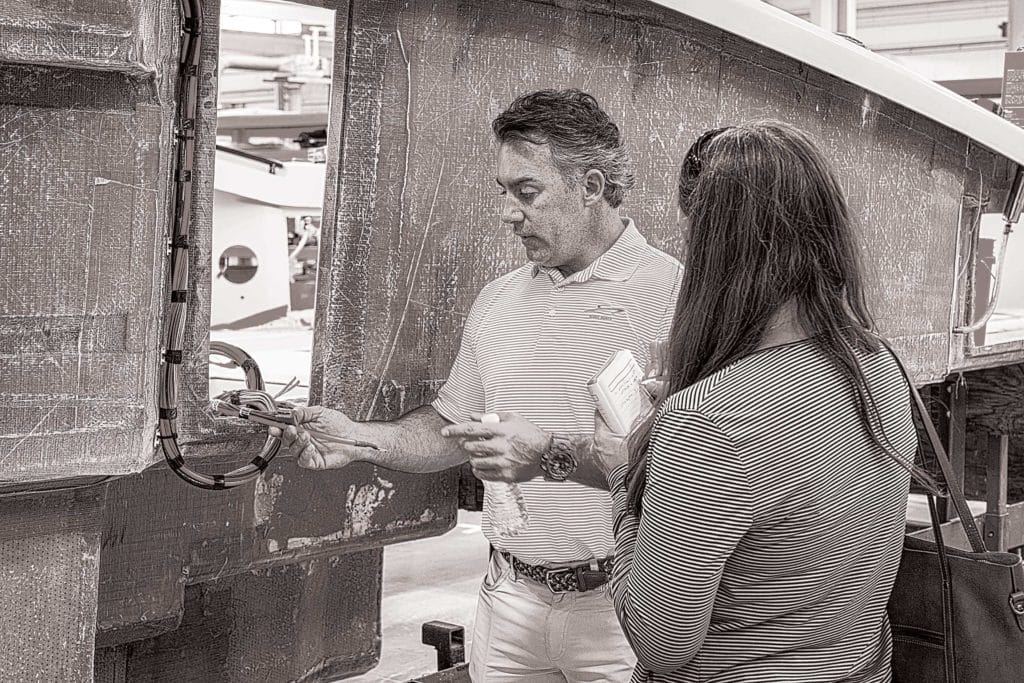
We were eager to see Building D, an 85-percent-efficient structure with motion-sensor lighting and 1,342 rooftop solar panels. This is the birthplace of the largest models in the Scout fleet, including our 380 LXF.
“In the 380, we use a hull epoxy infused with carbon fiber and e-glass,” Lang said. “It’s the entire hull, not just the keel, so you really get the strength and weight benefits. We’re the only production boatbuilder to use hand-laid, epoxy-infused carbon fiber. It’s aerospace-caliber.”
We spotted 380s in various stages of completion. Lang walked up to one and pulled down a thick document.
“This is the boat’s birth certificate,” he said. “Each boat has one. It documents who did what, and when. It’s usually 10 to 12 pages. It tells you everything about the boat’s life since day one.”
Design Dynamics
Walking through an unassuming glass door on a second-story landing, we immediately found ourselves in another world. We’d entered the design studio.
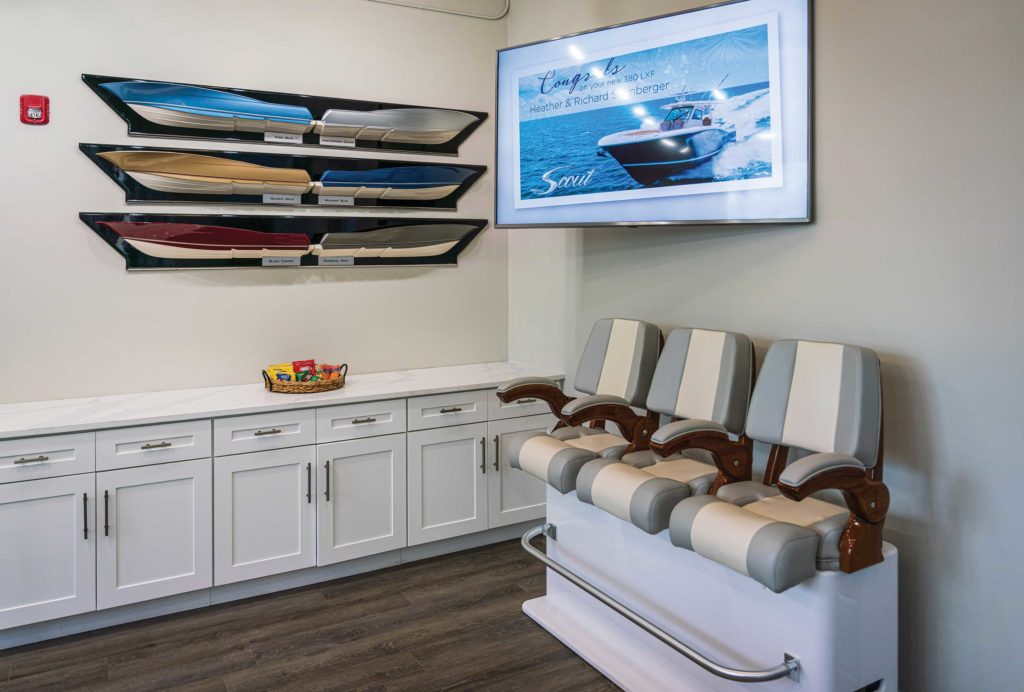
“This is where our owners get a reprieve, where they can take a breath after touring the factory,” said Josh Slayton, a Scout Boats concierge captain who joined us in the studio. “We want to bring them back to the luxury side of this experience.”
With a smile, Lang handed us a bag. My husband pulled out his-and-hers Scout Boats caps, a Williams Edisto oyster knife, and a bottle of the Animo Napa Valley cabernet sauvignon from California’s Rob Mondavi Jr., a Scout boat owner himself.
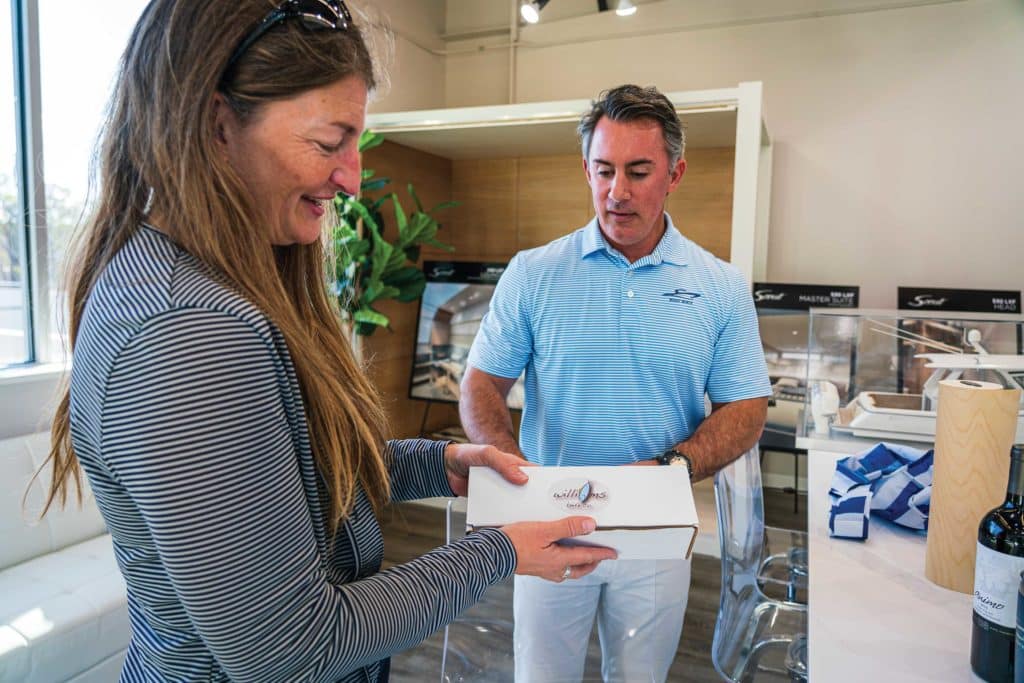
There was something else: a Scout Boats Yeti mug.
Looking up, I spotted a large projection screen welcoming us to this elegant design space.
“We built the design studio just for people like you,” Lang said. “We looked at high-end car dealerships, and we wanted to give people something special.”
As I walked around the room, I ran my hands along the many available steering wheels, exterior vinyls and captain’s chairs, including custom teak seats. I studied the electronics displays and color books, and I examined the room’s centerpiece island, featuring every possible appliance you might want.
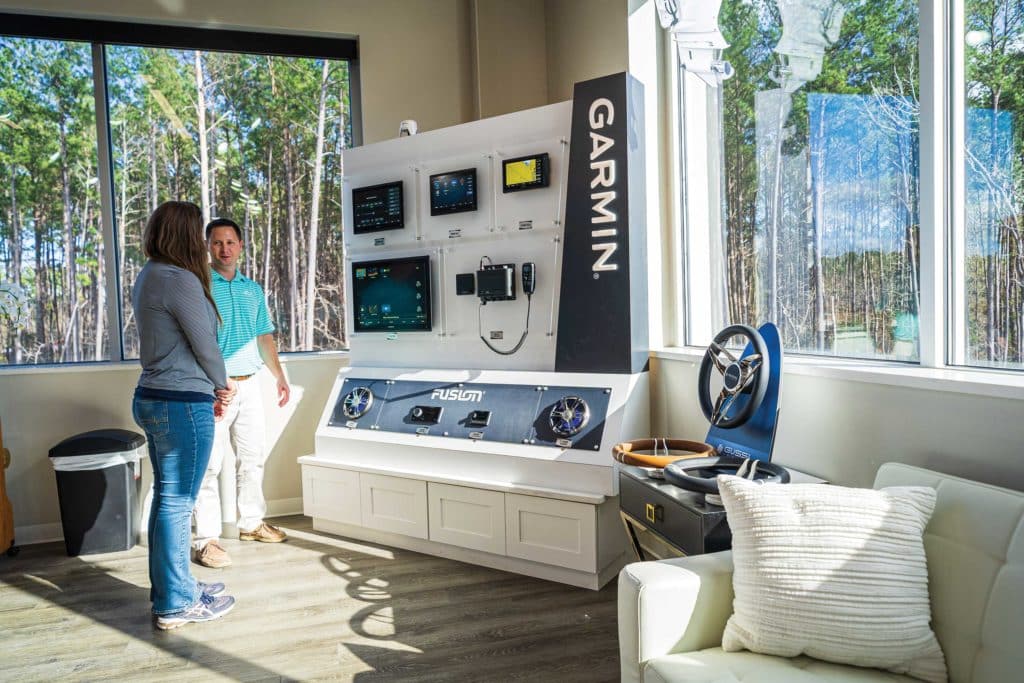
“This is a touch-and-feel room, not a sales room,” Slayton observed. “The purchasing decision is made by the time people get here, so this is about getting involved in the process, and making the boat your own.”
It’s also about seeing how cold that built-in wine cooler will keep your Champagne.
Instead of toasting our new purchase at the design studio’s well-appointed little bar, we opted to join Lang and Slayton aboard a 380 LXF for a quick boat ride down the Wando River to Charleston. This was our opportunity to see the high-end fit and finish on a 38-foot fishing boat that retails for more than $900,000.
Some of my favorite features on the 380 LXF included a side beach platform with hull cutout, a walkable transom with no splashwells, the standard Seakeeper 3 gyrostabilizer, and a rear aft-facing lounge seat that converted to a nifty summer kitchen. The patented retractable rocket launchers, designed to protect both the rods and the SureShade, were a nice touch—as were the four color-matched Mercury 350 Verado V-8 outboards, and the transparent livewell lids.
“We want people to be able to showcase what the hull is made of,” Lang said. I got a kick out of the automotive-style key fob that could start the boat remotely, and the large Garmin touchscreen helm displays that provided all necessary functionality. When I asked about backups, Slayton pointed upward.
“The boat is set up like a Tesla,” he explained. “We have redundancies, but we keep the switches out of your line of sight.”
I took a peek down below. The 380 has a large cabin, with a convertible queen berth, well-appointed galley, enclosed head with shower, and plenty of headroom.
“This is a gentleman’s fishing boat,” Lang said. “You can go fishing, and you can take it for dinner in Charleston.”
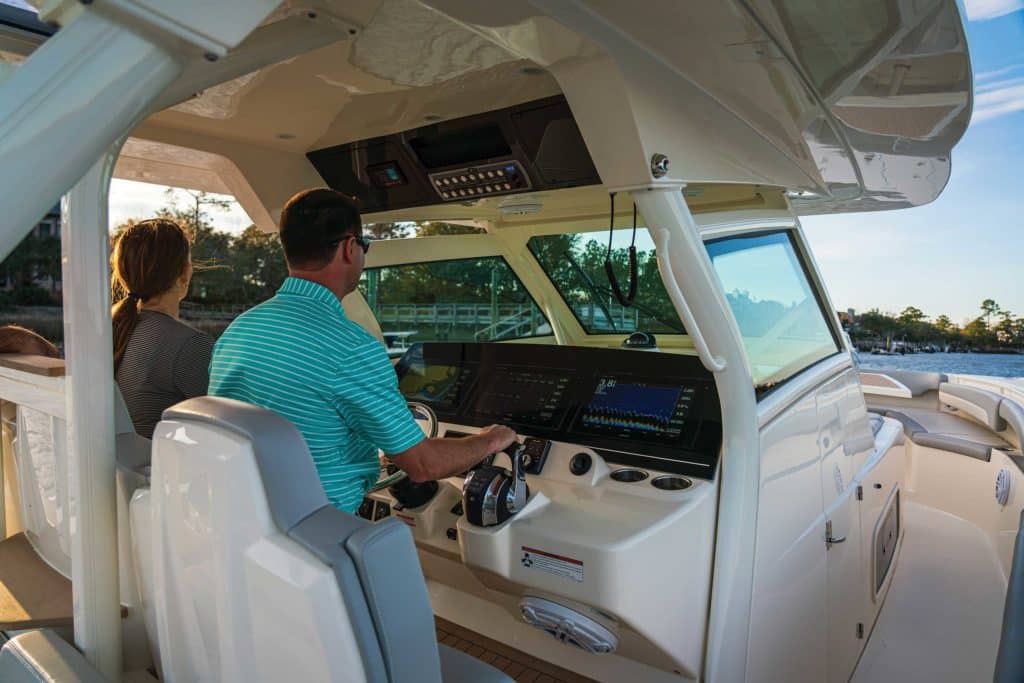
We motored from Ralston Creek into the Wando River. Slayton pointed the bow south toward Charleston, and the 380 roared to life. As we charged beneath the bridges toward the city, he explained he does exactly this with each new boat owner.
“As a concierge captain, I work with the dealers to prep the boat and take care of all the details, and then I spend at least one or two days with the owners, making sure they’re comfortable with the boat,” he said. “I focus on performance, functionality and features.”
Lang also added: “Our customers have my cellphone number, and I answer calls and texts 24/7. When Josh gets involved, he’s on their speed dial. We’re happy to do it. It’s a relationship, and we all become friends.”
The Royal Treatment
Back at the hotel, it was hard to leave the margaritas and appetizers, including fresh ahi tuna and spicy gumbo, on the Club Level. But Lang was scheduled to pick us up for dinner, and we didn’t want to miss the opportunity to experience Hall’s Chophouse; rumor had it, one must either wait months for a reservation or know someone. Thankfully, we knew someone.
Owner Bill Hall stood in the doorway, greeting customers with a handshake as they entered his upscale restaurant. He knew Lang by first name, and Champagne arrived at our table as soon as we sat down.
Slayton joined us, and he and Lang insisted that we order any delicacies we desired. Together, we savored oysters Rockefeller, a rich concoction known as “bacon steak,” tender bison filets, caramelized Brussels sprouts, and lobster mac ’n’ cheese.
We topped it off with the best bread pudding I’ve ever tasted, hands down. It wasn’t on the menu that night, but again, it’s who you know.
Throughout the meal, locals approached our table to greet Lang and exchange pleasantries. We gathered that many were Scout owners, just like the gentleman who stopped us as we were leaving.
“I heard you just bought a Scout,” he said. “Oh man, you’re gonna love it.”
After dinner, Lang turned to the pedicabs lined up outside in the street, and he directed us to enter one of them.
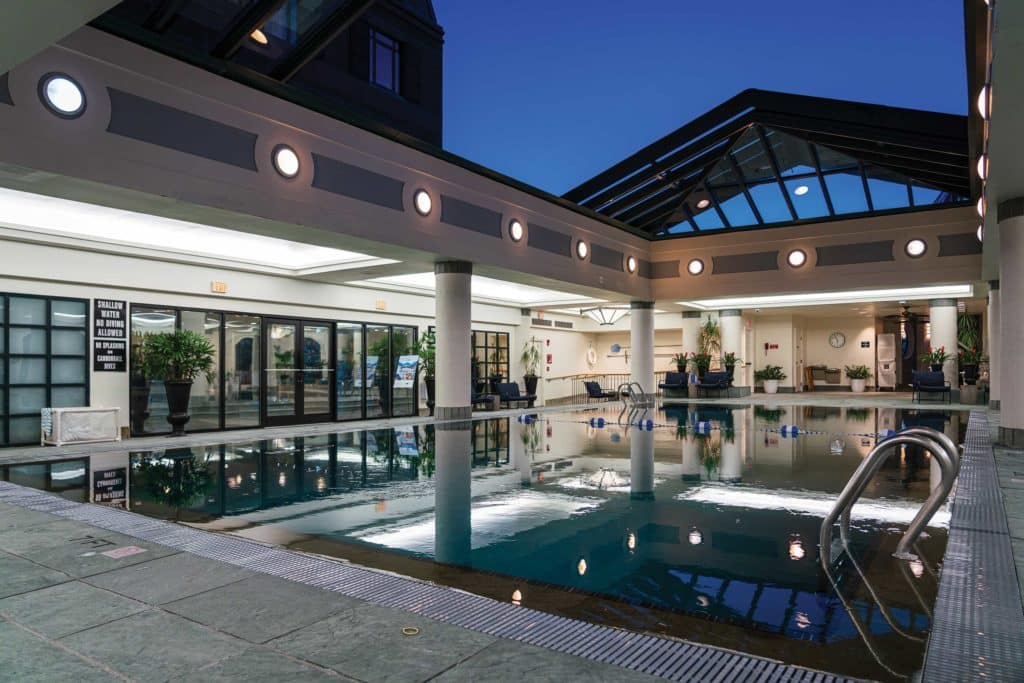
“Take them to the Belmond Charleston Place,” he said to the driver, and he turned to give me a hug. “This is part of your experience. Go have a nightcap in the Thoroughbred Room and enjoy the hotel. And the next time you’re here, be sure to give me a call.”
We fell silent as the driver pedaled us swiftly away down the street. All too soon, the elegant fountain outside the Belmond splashed into view, and we pulled up in front of the valets. Pedaling into the Lowcountry night, our driver called over his shoulder, “Hey, I heard you bought a boat! Congratulations!”









